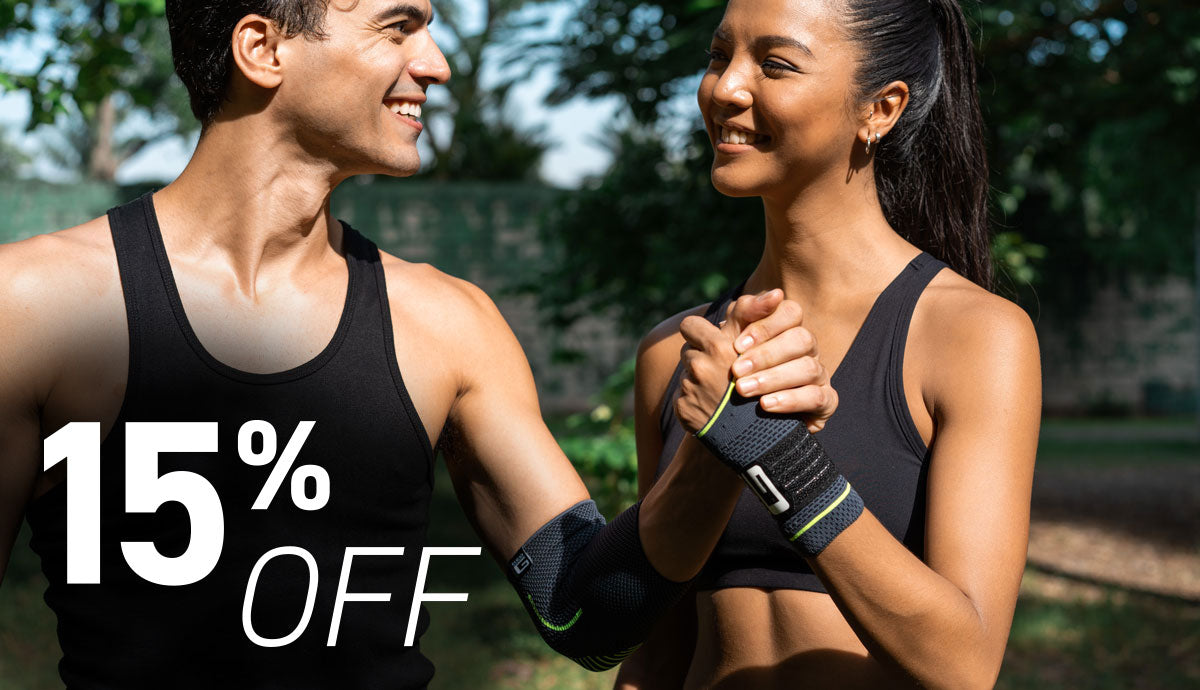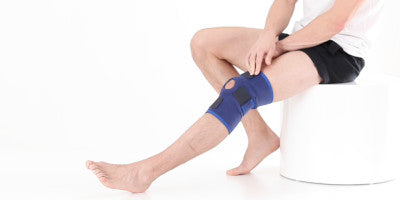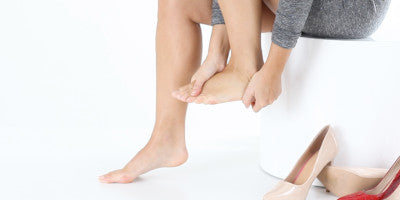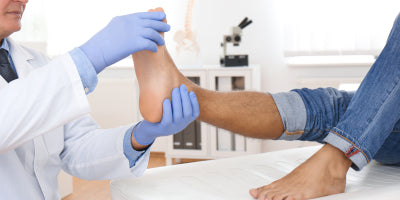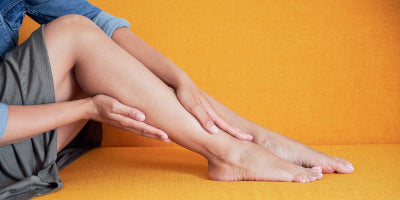Do I Need Insoles?

Are you wondering how to treat aching feet and heels? Perhaps you’re suffering from aching legs, knees or lower back? Shoe inserts, insoles or orthotic insoles may be the answer. Starting with the fundamentals, your feet carry the entire weight of your body on them, and your shoes actually do little to support them. The arch of your foot holds itself up, until it doesn’t, and it needs firm support. With your shoes having no arch support, you may want to try insoles. However, there are insoles and orthotic insoles. The former may be unstable gel or foam and provide only a superficial and needless cushioning. The “arch support” on a gel or foam insole will squish down under slight pressure, it shouldn’t. The latter, orthotic insoles, however, have firm arch supports that will hold your arches in the optimal positioning and support them as they hold the weight of your body.
What is an orthotic insole?
Orthotic insoles are medical devices designed to replace the factory footbed of your shoes to support your feet, provide stability and to help your feet achieve best alignment and ultimately relieve pain. By realigning your feet, orthotic insoles can reduce pain not only in your feet but also associated pain in your legs, knees and back, among other areas. Where some basic insoles aim to merely absorb shock and provide ineffectual cushioning, orthotic insoles provide what your feet actually need, stability. Basic gel cushion insoles can be like walking on jelly for your feet, unbalanced and, as you try to compensate for the instability, eventually damaging. One way to test the support of an insole is to hold it on a flat surface with one hand and apply pressure to the arch support with your other hand . If the insole moves or buckles under the pressure, then this will not be providing the correct support to your feet. A firm arch support is needed to hold the weight of your body. You may think that true orthotic insoles are only available via a prescription and at a high price. However, NeoThotics from Neo G provide true orthotic support, without the high price tag.
How do orthotic insoles work?
Orthotic insoles work by causing the nerve endings in your feet to send signals to your brain as they react to the insoles’ firm shape. The muscles in your feet and legs will begin to adapt to the new shape of the insole, realigning the body. NeoThotics Pro-Expert orthotic insoles achieve this realignment with a number of features, including:
- A deep heel cup, which provides stability for the heel.
- Tru-Arch support, which is firm and strong, providing the arch of the foot with support at the optimal level.
- Multi-Way Motion Control helps steady unnatural movement of the feet, which in turn helps to correct posture and promotes a correct alignment.
It is after your body has realigned that the insoles should be comfortable to wear, as the process of realignment can be uncomfortable at first. During the realignment phase, it is suggested that orthotics are worn only a few hours a day. The best way orthotic insoles work is with your perseverance through the realignment phase until you feel relief in your feet, legs, knees or back.
Are insoles just for foot pain?

Primarily, orthotic insoles will ease foot pain by providing support and stability. As stated above, orthotic insoles can help with associated pain in your ankle, legs, knees, hips and lower back. This is because they help realign your foot position to the best alignment, stopping the need for your body to compensate in other areas. If you’ve been suffering from pain in these areas and nothing seems to be helping, it could be a job for orthotic insoles.
How do I know I need insoles?
There are many reasons one might wear orthotic insoles. Some podiatrists may even suggest wearing insoles as a precautionary measure. Some reasons you may want to consider orthotic insoles are:
- Your feet ache after standing or walking for a period of time
- Your feet swell after standing or walking for a period of time
- You have a specific foot condition
- Your legs, knees, hips or lower back ache or feel pain after standing or walking for a period of time
- Your shoes wear unevenly
- You’ve had a lower limb injury
- To prevent a foot condition
Should orthotic insoles be soft?

Our NeoThotics Pro-Expert full length and ¾ length orthotic insoles are made of strong foam and are structurally strong. This is to ensure the anatomical design and shape is maintained through use. Soft insoles do not provide the appropriate orthotic support for best alignment.
At first, they may be uncomfortable to wear, this is due to the insole starting to move your foot into the correct position. It is during this adjustment phase (usually a week) that your feet are realigning and afterwards, should be comfortable to wear.
The problem with soft insoles is that eventually, they will mould to the shape of your foot and stop providing even the limited support they were giving.
According to podiatrists, the only time your insoles should have excessive cushioning is when you’re suffering from fat pad atrophy, where the areas of fat under your feet wear away over time. We have developed the Pro-Flex and Silicone Neothotics to be softer insoles. The Pro-Flex is still firm and proves a cushioning spring to give you energy back on every step. Our Silicone insoles have cushion zones which will provide comfort to areas that need it such as the heel and forefoot. What makes our Silicone an advanced orthotic insole is the integrated Tech Mesh, which strengthens the silicone and ensures the structural integrity of the insole is maintained. Unlike other basic insoles, it won’t mould to your foot and stop providing support, even though it is cushioning you.
What conditions do orthotics help?

Orthotic insoles provide stability and support to your feet. They offer a foundation for your feet which is sometimes corrective but always ends in comfort. At Neo G, we have three types of Orthotic insoles; Pro-Expert, corrective orthotic insoles. Silicone, which is also corrective but offers more cushioning that won’t degrade and lose structural integrity and Pro-Flex, which will help you stay on your feet all day with energy back on every step.
Developed in conjunction with leading podiatrists to be Class One medical devices, each NeoThotics orthotic insole can help with specific conditions.
The Pro-Flex insoles are designed for everyday comfort and support to ease foot discomfort and energize tired, aching feet. Where basic gel based insoles absorb the force of footfall impacts and disperse them, the Pro-Flex design actually gives energy back to you on every step via the Anti-Fatigue technology. The specialist material is soft enough to cushion your foot when it lands but firm enough to remain stable.
The Pro-Expert is our most advanced orthotic yet. Biomechanically engineered in conjunction with leading podiatrists in order to provide true support and effective relief from pain and underlying conditions associated with misalignment and abnormal movement of the feet.
NeoThotics Silicone Orthotic Insoles are constructed from Premium Grade Silicone for orthotic cushioning and shock absorption, combining firm support zones and soft cushion zones for support, comfort and pain relief. Medically engineered and ergonomically designed to fit the anatomy of the wearer's foot, featuring an embedded Hexagonal Tech Mesh, which strengthens the insole for maximum protection and support.
|
Helps With: |
||||||
|
Heel pain |
✓ |
✓ |
✓ |
✓ |
✓ |
|
|
Arch pain |
✓ |
✓ |
✓ |
✓ |
|
|
|
Ankle instability |
✓ |
✓ |
|
|
|
|
|
Achilles tendonitis |
✓ |
✓ |
✓ |
✓ |
✓ |
|
|
Knee pain |
✓ |
✓ |
|
|
|
|
|
Back pain |
✓ |
✓ |
|
|
|
|
|
Plantar fasciitis |
✓ |
✓ |
✓ |
✓ |
✓ |
|
|
Morton's Neuroma |
✓ |
|
|
|
|
|
|
Hallux Limitus |
✓ |
✓ |
|
|
|
|
|
Flat Feet |
✓ |
✓ |
✓ |
|
|
|
|
Cushioning and Comfort |
|
|
✓ |
✓ |
✓ |
✓ |
|
Relieve Pressure on Every Step |
|
|
✓ |
✓ |
|
✓ |
|
Give Energy Back on Every Step |
|
|
|
|
|
✓ |
|
Symptoms of Plantar Fasciitis |
|
|
|
|
|
✓ |
|
Foot Discomfort |
|
|
|
|
|
✓ |
|
Symptoms of Arch Pain |
|
|
|
|
|
✓ |
Do insoles fit all shoes?

All shoes are different and what sets our insoles apart is what you want them to do and what shoes they fit into. All the full length NeoThotics insoles, the Pro-Expert, the Pro-Flex and the Silicone, are trimmable via cut points, lines indicating where you can adjust the length of the insole. This means for each size of insole there is a range of shoe sizes it can fit. However, some shoes are harder to fit in than others, it is these types of shoes such as running shoes and narrow formal shoes that ¾ length insole may be better suited. Shoes that are smaller yet, such as heeled women’s shoes may require the Heel Cushion, where anything longer won’t fit. The Pro-Flex fits best in running and sports shoes and smart trainers, footwear you’d typically wear when you’re on your feet for long periods of time. This is perfect for taking advantage of the Pro-Flex’s energy giving properties. It is important to note at this point that in order to ensure the best fit possible, you must take out any factory insoles or foot beds that come with the shoes. Insoles do not sit on top of these, they replace them.
Orthotic insoles provide many benefits , but how do you decide which insoles are right for you?
When looking for insoles it is important to consider the following:
- What you need the insoles for? Do you have a serious foot condition and are in pain or do you just want your feet to feel energised and not achy at the end of a long day?
- What activity will you be undertaking whilst wearing them? Do you stand on your feet all day? Do you want insoles for running or playing sport? Or are you looking for something for everyday use?
- What shoes will you be wearing? Trainers, hiking boots, court shoes?
With insoles, it’s a case of picking the best one for the job and hopefully we’ve given you enough information to help you choose.
To learn more about each insole in the NeoThotics range, click here.
It is recommended that as soon as you experience any discomfort in your feet you seek out medical advice from your doctor or podiatrist.
NeoThotics orthotic insoles from Neo G are biomechanically engineered in conjunction with leading podiatrists to be class one medical devises that provide you with stability and support. To Learn more about the range, click here.
Medical Grade Compression Help to ease symptoms of tired, aching or swollen legs. Constructed from specialist material for comfort, softness and breathability. Find out more here.

For support in everyday activities, the Airflow and Airflow+ ranges offer lightweight, slimline supports that protect and reduce the impact on joints and muscles. Perfect for taking a walk, playing sport or support with day to day strain.
